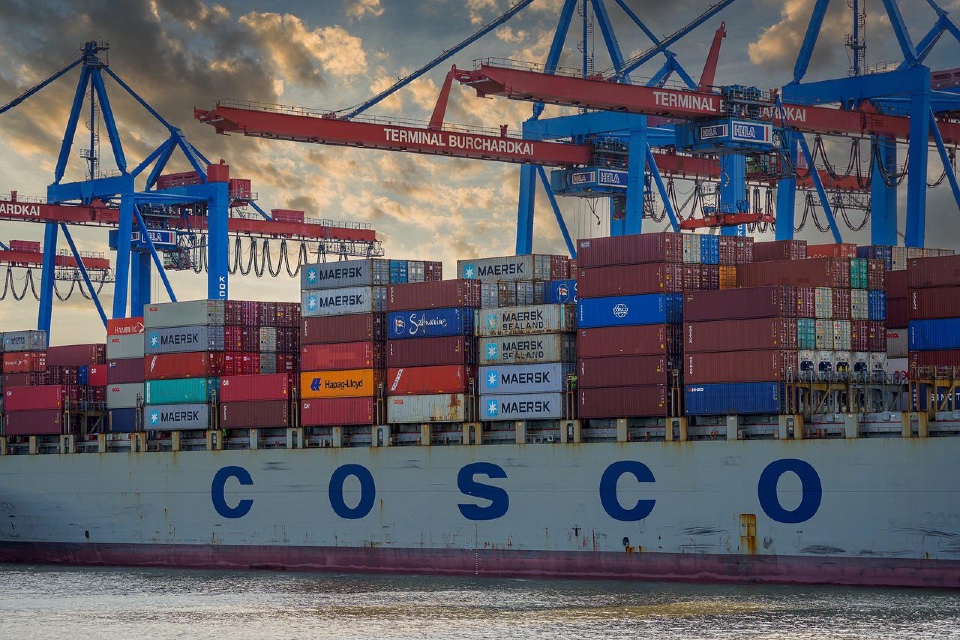By Ian Terblanche (pictured), Strategic Sales & Channel Director at Sigfox
With the rise in supply chain disruptions during COVID-19, companies may already have an eye on streamlining and improving supply chains but they are also under immense pressure to manage supply chain disruption.
When examining the challenges faced by supply chains today, companies need to build resilience by digitising their infrastructure? But how can they digitise and track their supply chain assets end to end when they are outside the enterprise boundary for most of their lifetime, often crossing country borders; how do they digitise an asset that has no access to power for months or years; and how can companies digest and make sense of multiple data sources from their own enterprise and external providers?
Disruption and digitalisation
Today, disruption is the new normal, and it is affecting supply chains a lot more frequently. Examples include earthquakes, tsunamis, sanctions, trade wars, COVID-19 and changing consumer demand. The magnitude and the frequency of this disruption has been escalating, and that is partly due to the globalisation of supply chains, and new risks presented by geopolitical and climate change issues.
The lesson is that disruption is here to stay, but businesses recognising, and taking advantage of, the changing demands that disruptions herald are primed to succeed. While manufacturers have suffered from supply chain disruption, online retailers like Amazon have profited and the unprecedented surge in businesses shifting online to continue sales means that many had to adapt their business processes to ensure their own survival. There is also a blurring of the line between retailer, shipper and pooler, which is itself creating new market opportunities.
The importance of prioritizing the supply chain
Resilient and flexible supply chain can be instrumental if not vital to recovery so now, more than ever before, supply chains are on boardroom agendas due to their impact on global businesses and CSR. Traditional prioritises like keeping costs down are becoming less important as companies actively consider how they can mitigate any loss or other supply chain risks. The focus of investment is on risk mitigation and increased resilience for rapid recovery and profit restoration, so COVID-19 has been the catalyst to more businesses understanding the magnitude and importance of investing in a supply chain. While costs may increase, this is outweighed by the benefits of fleet optimisation and the increased chance of business survival.
With supply chain modelling and optimizations changing, the time to make the investments in supply chain resilience and flexibility is now and, during COVID-19, a number of business cases, including Austrian Post from our own client base, have been approved. Industry reports have also forecast significant changes ahead in the supply chain sector with predictions of the global connected logistics market expected to grow during 2017-2023 at a CAGR of approximately 22% with supply chain analytics exceeding US$ 10 billion by 2027.
Resilient supply chains not only recover much faster from destruction, but when done correctly, with the right level of investment, a robust plan and systems in place, supply chains become a source of competitive advantage and open up new and interesting marketplaces or valuable segments. Resilient supply chains typically reduce risk exposure but only if they incorporate these five common characteristics: agility, digitization, connectivity, insight and rapid recovery capabilities.
Agility
A flexible ecosystem of suppliers and partners where materials can be swapped, and a dual or triple sourcing strategy is adopted, makes a supply chain agile. But so too do companies creating smaller more nimble manufacturing sites that are more able to adapt to challenges and change, rather than relying on traditional manufacturing sources, like China.
Visibility
It is often the case that when a shipment has left the last checkpoint, for example a sea port, organisations do not have visibility of that shipment’s exact location until the next checkpoint, which is often the next port. However, the Internet of Things (IoT) enables all elements of the logistics process from packaging and loading to distribution and storage to be tracked. This makes IoT solutions the ideal tool for supply chain visibility. Attaching IoT sensors to valuable components that need to be tracked gives all interested parties a holistic view of the supplier network so they can obtain accurate and ‘live’ information about shipment location, route and arrival time, amongst other things, as and when they need it.
Digitization
Digital transformation and Industry 4.0 connectivity are creating agile operations more capable of responding to and recovering from disruption. Aside from warehouses and production lines being fully automated, autonomous vehicles for short distance deliveries are providing supply chain flexibility. When combined with other technologies, based on digitisation & IoT, this helps manage market volatility, especially in industries that track assets.
Adoption of cloud-based supply chain applications is critical, with plug and play interfaces for connectivity, as regardless of the manufacturer, if apps and devices are interoperable, they can be used widely, and drive more valuable and deeper data.
Everything from raw materials and finished products to the vehicles that transport products can be tracked digitally to provide complete supply chain visibility of product and asset movement. This then helps businesses identify and respond to disruption quicker, while adhering to compliance needs.
Visibility is crucial. However, with digitization comes cyber risk too, so security needs to be firmly factored into a resilient supply chain strategy. The data derived from full digitisation has deep tactical and strategic value so defining a clear evaluation model is critical.
Connectivity
By implementing IoT-connected devices across the supply chain, businesses gain a vast array of data that not only fulfills regulatory requirements, but also offers extremely granular insights into the efficiency and real time operation of their networks. From a full overview of routes travelled, warehouse delays and network gaps to ensuring vehicles deliver best performance limiting downtime and repairs, while ensuring driver safety is of the highest calibre, the opportunities are almost endless.
Some businesses operate a “control tower” model to connect and manage their digitized supply chains. This set up resembles an airport control tower where they receive continuous updates about raw and finished material, orders, and production levels at manufacturing sites. This model provides complete local visibility, even of global supply chains, resulting in faster reaction times when problems occur, but the critical question is do you own this control tower or build trust in a third party who can manage it for you?
Insight
Data analytics provide insights into the supply chain, allowing teams to build forecasting, plan scenarios and develop early warning systems, which is key. As the pandemic evolved, the use of continuous scenario simulation has been employed to ensure that supply chains were all clear on what the required next steps would be, no matter what the disruption situation was.
Rapid recovery
The final characteristic of a resilient supply chain is the ability to recover rapidly. For success here, recognise that it is down to the people involved. Empowering teams to problem solve whether they are at home, in the office or warehouse, means that decision making is decentralised and teams on the ground can get on with deciding how to deal with a situation while feeding data back into a central command. This helps a business to understand and manage crises quickly.
The use of simple and accessible IoT solutions to digitise their infrastructure means that supply chain will continue to flourish, whatever disruptions they face.







